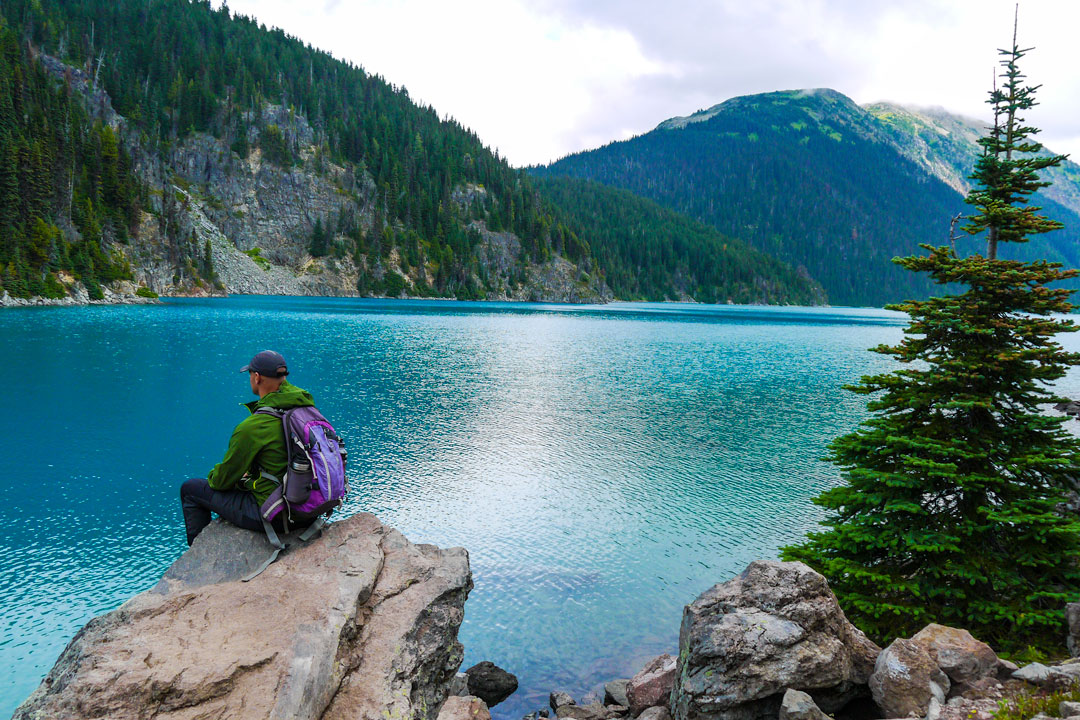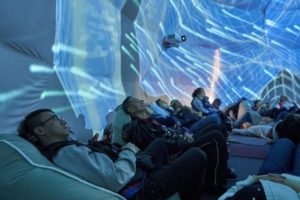[ad_1]
Surrounded by stunning nature the beautiful city of Vancouver is filled with a massive variety of opportunities for outdoor adventure activities. Mountains, peaks, the ocean and spectacular lakes create fantastic trails for hiking in Vancouver.
In this post I will discuss some great Vancouver hikes; some right inside the city and can be reached by quick, cheap public transport, some hikes closer to the famous ski town Whistler in Garibaldi National Park, some hikes in the outdoor paradise Squamish and hikes on Vancouver Island, their difficulty and how to reach the trail head for each hike. Hikes are arranged according to their location and difficulty is rated as
Easy – anybody of reasonable health should be able to do these hikes without training. Mostly reasonably flat and good to hike for families.
Moderate – more challenging longer and steep hikes, but you do not need to be an athlete to complete these hikes. If you are reasonably fit you should be able to complete these hikes with some effort, maybe be a bit stiff in the morning. Read carefully to see if you think you should attempt these.
Difficult – long, steep hikes only recommended for experienced, fit hikers.

I stayed in the city for 2 months doing many amazing one day hikes and some incredible multi-day hikes. Not having a car I reached most of these hikes by public transport or shuttles.
Even though many of these hikes around Vancouver can be reached by public transport, all the hikes are much easier to reach by car. For car rental I recommend using Rentalcar to find the best deal.
Vancouver Hikes in the City
Even when staying in the heart of Vancouver you are only a couple of minutes away from amazing back country wilderness. These hikes are all located on the edge of city, easy to reach with metro and bus local public transport system.

Lynn Headwater Regional Park
Lynn Headwaters is the largest of Vancouver’s regional parks, it is a beautiful park with many hiking trails to explore for all skill levels. The park has 74 km of trails. Routes in the park range from fairly flat trails with easy to walk boardwalks to backcountry trails with difficult sections that involves not only hiking but also some scrambling. Lynne Park was the first place that I went hiking in Vancouver and I was very impressed to find such beautiful forest hikes right in the city!
Public Transport to The Lynn Headwater Park
The Lynn Headwater Park is easily reached by public transport, there are various routes to take depending on your location. From Downtown Vancouver take the sea bus across to the Lonsdale Quay bus loop and take either bus #228, or #229. Bus #228 will take you to Lynn Valley Center, which is about a 15 minute walk from Lynn Canyon Park’s main entrance. A DayPass for $9.75 is worth buying, it covers all buses, SkyTrains, and the SeaBus in Vancouver.
Lynn Loop
Difficulty – Easy, Distance 5.2km , Elevation Gain 160m
Lynn Loop is a relatively easy and short trail passing through the forest, going up before turning back along the running water of Lynn Creek. The route wanders through a forest filled with Cedar and Hemlock trees with some views of the San Juan and Gulf Islands. The path is wide, well marked and easy to follow. The trail can be walked all year round, but can be icy and slippery in winter, so make sure to wear crampons this time of the year. It is a dog friendly hike, just keep your friend on a leash.

Cedars Mill and Headwater Trails
Cedar Mill Trail – 8km, Headwater Trail – 14km
Difficulty – Easy
The Cedar Mill trail is fairly flat, just an extension of the Lynn Loop with an elevation gain of only 100m. For a longer walk just keep going straight on the Headwater Trail, don’t turn of at the Big Boulders, but continue on the Headwaters Trail for a further 2.0km to the Third Debris Chute, turn off on to the Cedar Mill Trail here coming back along Lynn Creek from here. The trail becomes a bit more steep, climbing a total of 380 m over the 14 km trail. To extend the walk even further, continue for an additional 3 km to the Norvan Falls lookout past the Third Debris Chute before turning around and following back the trail. The headwater trail climbs above the valley, the Cedar Mill trail
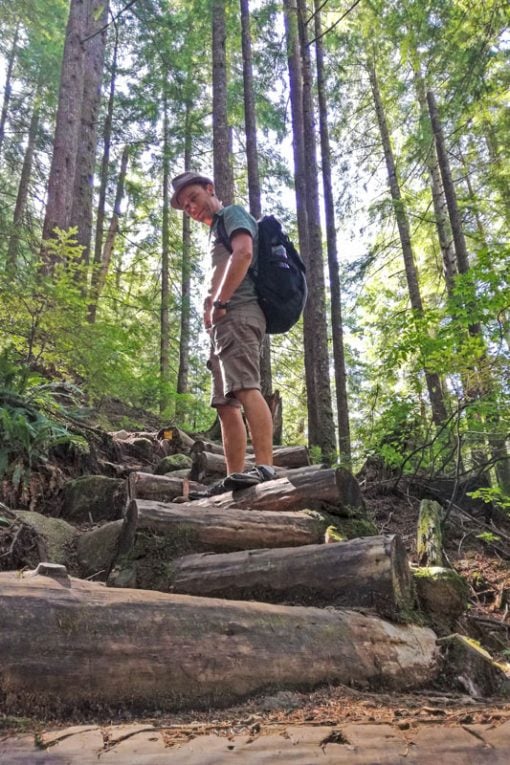
Lynn Peak trail
Distance – 8 km, Difficulty – Moderate to Challenging
If you want to do a steep climb in Vancouver almost like the Grouse Grind this hike in the Lynn Headwaters Park this is a good challenge for you. A friend that I asked did not really rates this hike and I decided to rather walk from Lynn Park to Quarry Rock. The hike to Lynn Peak starts to the right from the kiosk at the park entrance, after about 15 minutes there is a sign for the Lynn Peak trail. This is a steep climb with an elevation change of 720m over 4km and is often compared to the Grouse Grind. The hike takes about 4 hours return with some views of Vancouver and Mount Seymore.
Quarry Rock
Difficulty – Easy, Distance 3.8 km, Elevation Gain 100m
The route to Quarry Rock is one of the most popular hikes in Vancouver. Quarry rock is a rocky hill with great views of the beautiful shores of the scenic Deep Cove bay in North Vancouver. The Quarry Rock hiking trail is an easy out-and-back hike that overlaps with the first part of the famous Baden Powell Trail. The trailhead where the route starts in Deepcove is located on Panorama Drive in Deep Cove, just north of the parking lot and is marked by a post. The trail passes through a forrest with dense growth of Hemlock and Douglas Fir trees. The trail is not too steep with only 100m elevation gain and opens up into beautiful views of the bay at Quarry Rock.
To reach the hike by public transport take bus 211 from downtown Vancouver to Deep Cove or by taking bus 212 from Phibbs Exchange.
Baden Powell Trail
The Baden Powell trail is a 48km trail stretching from Deep Cove to Horseshoe Bay across Vancouver’s North Shore.
Very few people walk the entire trail at once, it is a long distance for one day and it is not flat, some big climbs with a total ascent of 4860m. Both ends of the Baden Powell trail are close to sea level, with a high point of 4,016 feet (1224 m) at the peak of Black Mountain. The trail is the location for a very popular annual ultra-marathon trail run, The Kneeknacker, that has been completed in a record time of 4h 30 min! There is nowhere to camp along the way, but the trail has a couple of access points and it is not too difficult to hike the trail in sections. The four sections of the trail commonly hike is Deep Cove to Lynn Valley, Lynn Valley to Grouse Mountain, Grouse Mountain to Cypress Mountain and Cypress Mountain to Horseshoe Bay. We walked one section of the trail from Lynn Valley to Deep Cove.

Deep Cove to Lynn Valley – Combine Quarry Rock and Lyn Valley on the Baden Powel Trail
Distance – variable, Difficulty – variable
You can hike on the Baden Powell trail from Lynn Valley Park to Deep Cove, this stretch is 12 km. We started at Lynn Valley first completing the Cedar Mill trail after which we continued on the Baden Powell trail via the Quarry Rock trail to Deep Cove, according to our GPS our total distance was 28 km, taking 7 hours, doing this whole route combining trails was a long hard day.
Lynn Canyon Suspension Bridge – At the start of the trail from Lynn Valley to Deep Cove we crossed this 50m high suspension bridge, a popular free alternative to going over the much more famous, popular and pricey Capilano suspension bridge.
Grouse Grind
Distance – 3.0 km (take the gondola back down for $15), 800m elevation gain, Difficulty – Moderate to Challenging
The Grouse Grind Trail is a 3.5 kilometer, very steep, out and back trail located in North Vancouver, at the base of the Grouse Mountain Resort ski area. When I started doing research on hikes around Vancouver, The Grouse Grind, popped up everywhere. This trail is legendary in Vancouver with local hikers calling it ‘nature’s stairmaster’. It deserves this reputation climbing an incredible 800 m over 3 km! The trail is primarily used for hiking and running. The Grouse Grind is super crowded with about 100 000 people climbing it in a season. The Grouse Grind trail only goes one direction, UP. Descending is not allowed on the trail, hikers take the gondola down, a $15 ride.

I rate the trail as a moderate hike, even though it is very steep,
it is a short walk that took us 1h 10min to complete with hikers
taking 1.5 to 2 hours on average to walk the trail. You have to be in
good shape to do this hike, it is basically climbing a 3 km set of
stairs.
Many locals run/walk the trail regularly for exercise, it only takes an hour or so and is excellent exercise. You can buy a Grind Timer card allowing you to scan your card at the bottom, and again at the top and check your stats online, see your time for the day, season times, other’s times, and all records. The record for the most grinds in a day is climbing this beast 14 times in one day!

It is possible to hike down after hiking the Grouse Grind Trail, you must decent with an alternative trail. It is possible to walk down with the BCMC trail that winds down the eastern side of the mountain. Allow about an extra 2 hours for the decent.
There is a lot to do at the top of Grouse Mountain you will definitely not expect at the end of a hike; fine dining, a high definition cinema, lumber jack show and see two grizzly bears, Grinder and Coola, who live in a five-acre mountain sanctuary. These amenities are mostly used by the thousands of people getting to the top of the mountain with the Skyride since most people don’t feel like dining or a movie after a strenuous 1 or 2 hour hike!
Stanley Park
Distance – variable, Difficulty – easy
Stanley Park is a 405-hectare public park that borders the downtown of Vancouver and is almost completely surrounded by Vancouver Harbour and English Bay. The park has a total of about 27km (17 miles) of trails winding through the forest. Stanley Park is very popular with hikers, runners, bikers, families, rollerbladers, and even to go for a swim.
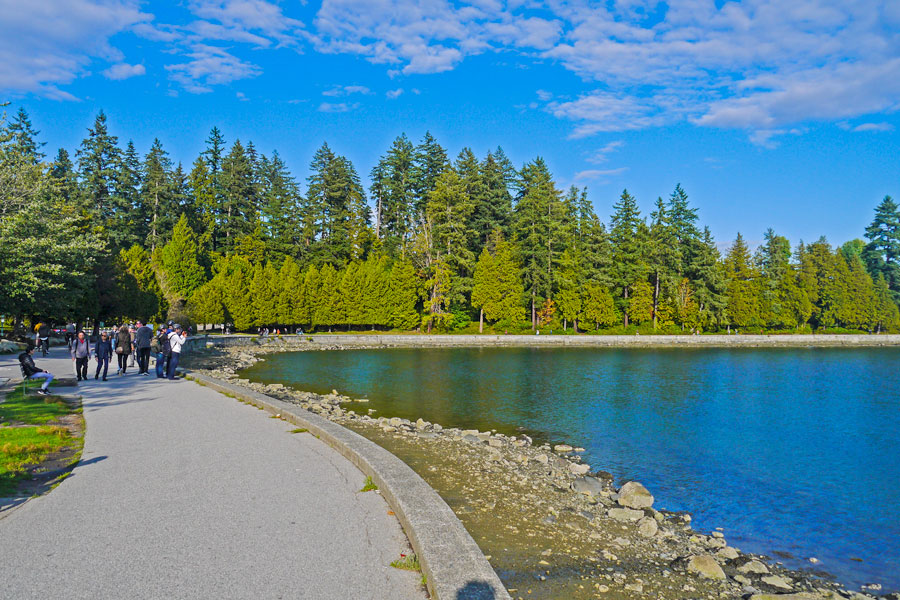
The Stanley Park Seawall that loops around Stanley Park is a very popular attraction in Vancouver looping 8.8 km around the park next to the ocean! The Stanley Park Seawall is part of the world’s longest uninterrupted waterfront path. Together with the Seaside Greenway the seawall forms a 28 km uninterrupted pathway extending from the Vancouver Convention Centre to Spanish Banks Park. Want to go for a long walk or run? this is the spot! All the trails in Stanley Park can be found on Google Maps.

Burnaby Mountain
Distance – variable, Difficulty – easy to moderate
Burnaby Mountain located east of downtown Vancouver has a network of popular hiking trails of varying difficulty. These trails are well marked and can be found all around SFU (Simon Fraser University) Campus.
Several trails can be combined to form loops of varying distances for example trails called Gear Jammer, Mel’s, Dead Moped, Power Line, Pipeline, Nicole’s, and Poplar Trails together form a nice 5 km loop and for a more challenging 12km loop combine Mountain Air, Barnet, Cougar, Cardiac, Summit, Velodrome and Drummit.
Burnaby Mountain loops to hike around SFU.
The trails are of moderate difficulty, if you want more of a challenge here tackle the Velodrome trail, also called Burnaby’s Grind. The trail head is located at the northeast corner of the Velodrome. The Velodrome trail climbs steeply from the Barnet on the north side of Burnaby Mountain and arrives at the Japanese totem poles at Horizons Restaurant.
The Trans Canada Trail runs through the Burnaby Mountain Conservation area connecting many of the trails in the area. The Trans Canada Trail, also named The Great Trail is a cross-Canada system of greenways, waterways, and is the longest recreational trail in the world. In the City of Vancouver, the Trans Canada Trail comprises 42km of trails connecting a number of communities and parks of which 24 km is shoreline pathways or on seawall. Hiking the whole 42 km could be a great mission!
I started hiking at SFU that is easy to reach with the Vancouver public bus system and explored several well marked trails.
Transport to Burnaby Mountain – #95B Line bus connects downtown Vancouver and Simon Fraser University via Hastings St
Hikes near Whistler
Garibaldi Park is a wilderness park located on the coastal mainland between Whistler and Vancouver. It is easy to reach and do long one day hikes from Vancouver, being located 70 kilometers, about 1.5 hours drive, north of the city. The park is named after the glacier-ringed Mount Garibaldi (2,678-meters) and is a hiker’s paradise offering over 90 km of well marked trails including several of the top trails in Canada such as Garibaldi Lake, Black Tusk, Panorama Ridge and Elfin Lakes.

Camping is possible with ten campgrounds in addition to numerous wilderness camping opportunities.
The trail head for the hikes to Garibaldi Lake, Black Tusk, Panorama Ridge is at the Rubble Creek parking area of Garibaldi Provincial Park.
Transport from Vancouver to Garibaldi National Park
It is easy to reach the trail head by car from either Vancouver (70 km away), Whistler (35 km) or Squamish (38 km). To get to Garibaldi Provincial Park from Vancouver, take Highway 99 known as the Sea-to-Sky Highway. For car rental options I recommend using Rentalcar
From Vancouver the trails in Garibaldi can be reached by public transport using the Parkbus. The bus service is currently $53 for a return ticket to Rubble Creek. The bus leaves early in the morning and gives you about 10 hours before the return bus picks you up, this should be enough time to do any of the trails. If you are alone and don’t want to hike alone you can always try to hook up with someone on the bus since everyone is on the same itinerary, most people go to hike to Garibaldi lake.
Garibaldi Lake
Distance – 19.0 km, 900m elevation gain, Difficulty – Moderate to Challenging
The beautiful Garibaldi Lake with turquoise glacial waters, sits at 1450m above sea-level surrounded by snow-capped mountains, alpine meadows, and volcanic structures. The wide and well-maintained trail ascends through old growth forest, passing creeks in a series of steep uphill switchbacks.
This is a fantastic hike, but it is challenging, you climb continuously for 9km to reach the lake the round trip takes the average hiker 5-7 hours, and is 18km with a 900m (2953 ft) ascent to the lake. I walked around the lake as far as the trail allowed and expected the glacial lake to be freezing, but it was actually very nice for a dip, test the water before jumping in! My total hike was 20 km taking 5 hours and 10 minutes.
Black Tusk
Distance – 26.0 km, 1620m elevation gain, Difficulty – Difficult
The hike to the Black Tusk is a challenging hike to one of Whistlers most iconic mountains. The hike offers some spectacular views. Hike the Garibaldi Lake trail along past the Taylor Meadows, continue up the trail to the viewpoint of Black Tusk with a sign saying “End of maintained trail”. Many people only hike to this shoulder, 7 km past Garibaldi Lake. From here, the hike becomes significantly more difficult going up a steep slope of loose and exposed rock. It is possible to ascend further with a tough scramble called the chimney. Climbing the chimney is recommended only for rock climbers or experienced mountaineers.

Do not underestimate the hike or the weather as you ascend the Black Tusk, it is a significant increase in elevation. I hiked it alone in the rain, it was end of August and I was caught by surprise by extremely cold weather and even snow at the shoulder.
Many people hike Black Tusk as a two day hike camping at Taylor Meadows. This way you can also hike to Panorama Ridge or Garibaldi Lake.
Panorama Ridge
Distance – 30.0 km, 1520m elevation gain, Difficulty – Difficult
The hike to Panorama Ridge is another challenging hike in Garibaldi National Park and many rate the views as the best in the park. The hike is a long one and takes hikers 9 to 11 hours to complete on average. If you come with the Parkbus, you have 10 hours, make sure you are back in time. I did a large part of the trail hiking to Garibaldi Lake and the Black Tusk, but did not do the trip to Rubble Creek a third time. From Panorama ridge you get great views of Black Tusk, Garibaldi Lake and Helm Lake.
Hikes Near Squamish
Squamish is a small town 63 km north of Vancouver, immersed in stunning nature it is famous for adventure activities with plenty of spots for awesome rock climbing, kite surfing, mountain biking and hiking. It’s surrounded by mountains of which the Stawamus Chief, a huge granite monolith is the most famous.

Transport to Squamish
It is a quick drive from Vancouver to Squamish on the BC-99 S highway, 63 km taking about 55 minutes. There is daily public transport with the Squamish connector for about $CAD 30 return or several other bus services. I stayed over in Squamish or two and did the Black Tusk from here, getting to Rubble Creek parking area in Garibaldi Park is easy from here with the Shred Shuttle for $CAD 22 return.
The Stawamus Chief
Distance – 8.0 km, 903m elevation gain, Difficulty – Moderate to Challenging
The Chief is one of the classic hikes in the area. Located walking distance from the town Squamish the steep trail takes you to three peaks with incredible views of the area surrounding Squamish, including Howe Sound and north to Garibaldi Provincial Park. The hike is challenging with 900 meters climb over 8.0 km with some stairs and climbing over big rocks with ladders and chains
The Stawamus Chief has 3 peaks on route taking about 6-hours on average to complete depending on you level of fitness.
From the trail head off the Sea To Sky Highway, walk into the forest and along the wide trail as you pass by the campsite. It is not a very long trail, but has some challenging sections after you reach the wooden stairs from where it is uphill all the way! The views from the 3 peaks are spectacular!
Hikes on Vancouver Island
Vancouver Island is the largest island off the west coast of North America at about 450km long and 90km wide. Home to mountains, glaciers, spectacular old growth forests and hundreds of kilometers of coastline the island is filled with amazing hiking trails. Best known for unreal coastal trails with the West Coast trail the most famous, but there are many more amazing trails for exploring the Pacific Coast on this beautiful island. Prepare yourself for long walks on the beach seeing whales, killer whales, otters, seals and more amazing animals.
Transport Vancouver to Victoria on Vancouver Island
Crossing the 44 km from Vancouver to Vancouver island is easy with BC ferries, taking about 1h and 35 min, check the BC ferry schedule. Renting a car is again the easiest option, but by public transport take the Canada line to Bridgeport station on platform 12 take bus 620 to Tsawwassen Ferry Terminal and take a ferry to Swartz Bay Ferry terminal. Take bus 70 to down town Victoria.
The ferries are great with restaurants, WiFi, entertainment and following a beautiful route, you might even see whales or porpoises on the way!
The West Coast Trail
Distance – 75.0 km, 1557m elevation gain, Difficulty – Challenging to hard
The West Coast Trail might be the best known beach hiking trail in the world. It is a strenuous 75 km multi-day beach and forest hiking trail with a large part of the trail being spent hiking on miles of extensive, white sandy beaches separated by spectacular indigenous forest. The reputation for being a tough hike is well deserved and the trail can be brutal when there is a lot of rain with slow progress over difficult terrain including pools of mud, ladders, bridges and cable cars. The trail stretches from the Gordon River trailhead, close to the town of Port Renfrew in the south, to Bamfield in the north and can be hiked in either direction. The trail takes 6 to 7 days to complete and is quite pricey, costing me in total about $CAD 500 all inclusive for the one week hike. Once again renting a car is the easiest way to go, but the West Coast Trail Express provides a shuttle bus service in season, May 1 to September 30 from and to Victoria.
The Juan de Fuca Trail
Distance – 47.0 km, Difficulty – Moderate to Challenging
The Juan de Fuca Marine Trail is another remarkable multi-day hike along the west coast of Vancouver Island progressing over beautiful beaches and through spectacular indigenous forest.
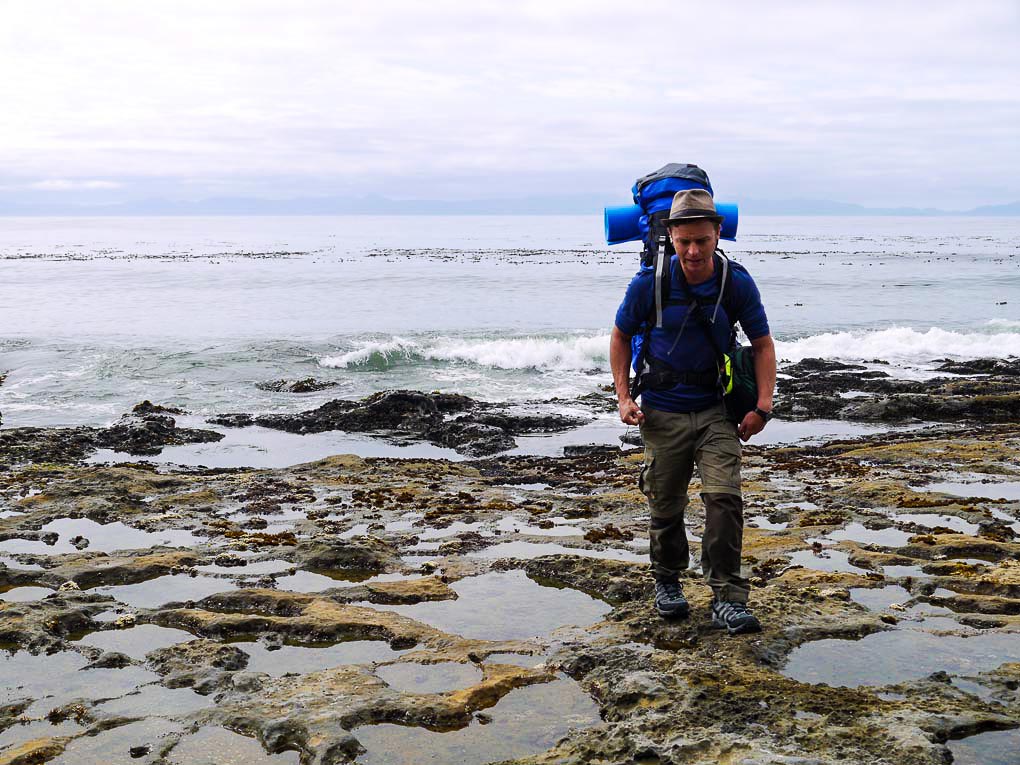
This trail is a great alternative to the West Coast trail with similar scenery also starting close to Port Renfrew extending along the coast in the opposite direction. No booking is necessary, it is a bit easier than the West Coast train and the trail is open all year round.
It is a moderate to strenuous 47 km hike in the Juan de Fuca Provincial Park, we hiked the route in four days, which is the most common way to complete the entire trail. The route stretches from China Beach, close to the town Sooke in the south, to Botanical Beach located close to Port Renfrew in the north. We really enjoyed hiking the Juan de Fuca, but I felt the West Coast trail deserves being the more famous of the two, being more challenging with a lot more walking on the beach and camping on the beach every night.
Day Hikes on Vancouver Island
The beautiful Vancouver Island with plenty of National Parks is filled with amazing shorter hiking opportunities, from an hour or two to challenging full day hikes along the rugged west coast of the island and through ancient forests and alpine areas on the interior of the island.
The Juan de Fuca trail is a multi day hike, but can be accessed from several trail heads each with car parking if you want to do parts of the trail as one-day hikes or only walk part of the trail, in this way some people also do the trail over more than one weekend. The trail can easily be accessed from the road at Parkinson Creek, Sombrio Beach and China Beach. Sombrio is a beautiful beach with several campsites on the beach and is popular with local surfers.
There are several other popular day hikes
The Galloping Goose Trail – a 55 km from Sidney, continuing through downtown Victoria, ending in Sooke, there are many access points for the trail. Nice swim spots – Thetis Lake and Sooke potholes
Gowlland Tod beautiful park close to Victoria on southern Vancouver Island with more than 25 kilometres of trails, varying in degree of difficulty. Trail goes through the Gowlland Range with spectacular views of the Finlayson Arm. Also known as Tod Inlet and offers a range of trails. The main trailhead close to Brentwood Bay. There are three park accesses; Tod Inlet, Mackenzie Bight and Caleb Pike.
Packing List for Trekking around Banff
Gaiters – Waterproof Windproof Warm Shoes Cover. Gaiters are great for keeping snow and mud out of your boots!
I hiked Banff September/October and hiked in a packable down jacket over my hiking shirt.
Hiking boots/shoes
- waterproof
- breathing
- have good grip – sometimes you walk on muddy or rocky terrain
- fit good – you have some space to wiggle your toes
- good quality
Should you hike in boots or shoes? In winter for muddy conditions or snow boots are preferable. In dry conditions without snow the need for ankle support is a personal preference. In winter with snow I will strongly recommend that you wear boots and close them up with some gaiters. Wearing merino wool socks in waterproof hiking shoes is the way to go and I will definitely add gaiters if it is rainy. Merrell Moab 2 Waterproof or Salomon X Ultra Prime are good option for low cut shoes; durable, waterproof, comfortable, have good grip. For boot cut – KEEN Targhee II Waterproof or more budget option – Columbia Granite Ridge.are good shoes.
Merrell Moab 2 Waterproof or Salomon X Ultra Prime are good option for low cut shoes; durable, waterproof, comfortable, have good grip. For boot cut – KEEN Targhee II Waterproof or more budget option – Columbia Granite Ridge.are good shoes.
For ladies – Alya prefers a more ‘girly’ option to leather boots – shoes like KEEN Targhee II, Salomon Ellipse 2 or Merrell Moab 2 Waterproof. She has walked about 3000km in her Merrel Moab2’s ! If you’re looking for something cheaper Columbia Dakota Drifter is a good option. For ladies that prefer a boot cut Columbia Women’s Newton Ridge Plus Hiking Boot, is an excellent choice.
I always have a rain jacket with me on a hike. A waterproof jacket ladies or (men’s model) with hood in case of strong wind or rain is a must on this trail.
Great pants for all conditions hiking pants, Alya walks in trekking pants or yoga pants.
Fleece vest- very light to pack, a fleece vest is nice for extra heat layering, ladies.
Hiking shirt – I never wear cotton, if you sweat under your jacket you will be wet and cold underneath. Alya prefers hiking in breathable, moisture wicking, quik dry long sleeve shirt. I love hiking in Columbia shirts, they do not absorb water so dry quickly and protects me from the sun if I take my jacket off. Quick dry if I get importunity to hand wash on the way.
Sport bras – they are great for hiking and outdoors, Alya says that she prefers sport bras over normal bras.
Merino wool socks – a must have especially for long hikes. In the past we didn’t pay much attention to socks – bought any random cheap socks and used to have blisters. We’ve heard a lot from other hikers about merino wool socks and finally decided to give it a go. They do work great, now we always wear them for hiking. Some advantages of merino wool socks; don’t absorb odors, protect your feet, dry quick and very durable. For even more comfortable walk check Darn Tough hiking socks they’re famous for great foot support and blister protection. Alya likes their ladies’ models; colorful and funky.
Cap/hat – a must have in the mountains for sun protection. Alya prefers wearing a cap, I usually takes a hat on hikes.
Sunglasses – bring sunglasses for hiking in the mountains with high UV protection and polarized lenses.
Pack a BUFF Multifunctional Headwear – protects your neck and face from sun burn, wind and weather. Get a funky one, mine is a South African flag, awesome for photos!
Trekking Poles – very helpful in the mud, if you don’t have a pair get a stick early on, helped us a lot. TrailBuddy Hiking Sticks, TrailBuddy Hiking Sticks very well rated, good value for money, aluminium trekking poles. Aluminium is strong and a bit heavier than carbon, my advice is save some money, go for these guys! Top of the line Black Diamond Trail Pro Shock Trekking Pole, 68-140cm.
Planning to do a multi day backpacking hike? for a tent I can recommend a MSR Hubba Hubba NX 2-Person Lightweight Backpacking Tent, I hiked all over the world with mine camping in different conditions, a fantastic, easy light, super quality tent.
[ad_2]
Source link

